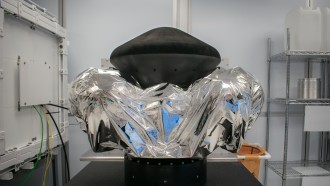A team of geneticists analyzed the DNA of prehistoric humans across Europe to see how the populations handled extreme climate conditions before, during and after the last Ice Age. Researchers discovered there was a massive population crash in Europe around 14,500 years ago due to climate change.
During this period, when the environment started to warm up at a faster rate, the glaciers around the world melted. This led to the rise in sea levels by 52 feet in about 500 years. The change in climate placed the environment in a frantic chaos where wildlife tried to adjust to the temperature fluctuations. Prehistoric humans also suffered heavy blows.
The DNA analysis found that disappearance of age-old bloodlines of hunter-gatherers who thrived for thousands of years before the shift. The old bloodlines were replaced by new ones of unknown origin.
"Our prehistory is much more complicated than we had thought. We discovered an unknown chapter of human history," said the study's first author Cosimo Posth.
The researchers analyzed the mitochondrial DNA sequence of 35 individuals who lived between 35 and seven thousand years ago across Europe. The mitochondrial DNA is a small genetic material passed down through generations from the maternal line and remains unchanged. It also evolves slowly, therefore, two people from one maternal line can have the same mitochondrial DNA even with thousands of years between their lifetimes.
Outside of Africa, there are two chief ancestries that emerged when modern humans started scattering across the planet around 55,000 years ago, namely the haplogroup M and the haplogroup N.
It was widely believed that both groups ventured as far as to the Americas, Australasia and Asia but only the haplogroup N survived in Europe into the present time. Today, it is believed that Asia, Americas and Australia are present with descendants of the two lineages. It was believed that around 45,000 years ago, both groups settled in various parts of the globe but Europe was occupied only by the haplogroup N.
However, the new DNA analysis, which was published in the Current Biology magazine, proved that there were members of the haplogroup M living in Europe around 25,000 years ago but something catastrophic wiped them out.
Members of the haplogroup M in Europe were discovered in the far North. During the final phase of the last Ice Age, the early humans who once roamed the open fields retreated into small groups that became separated by ice and frozen wastelands. Researchers believed that climate change-related activities resulted in their eventual demise.
Photo: Ben Francis | Flickr









